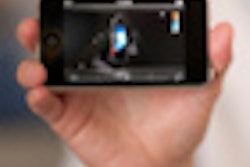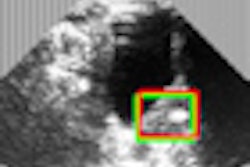Sunday, November 27 | 11:35 a.m.-11:45 a.m. | SSA12-06 | Room S504CD
Can contrast-enhanced ultrasound (CEUS) be used to localize secondary lymph nodes? Results from an animal study at Thomas Jefferson University suggest that it can.Following up on previous work showing the ability of the Sonazoid ultrasound contrast agent (GE Healthcare) to detect sentinel lymph nodes in swine, the researchers sought to evaluate its potential for detecting secondary lymph nodes, according to presenter Dr. Barry Goldberg.
After administering peritumoral injections of Sonazoid to 21 swine with naturally occurring melanoma to enhance their sentinel lymph nodes, the swine received a second injection under ultrasound guidance into the enhanced sentinel lymph nodes to detect contrast-enhanced efferent lymphatic channels and secondary lymph nodes, according to the researchers.
After CEUS, the swine were given peritumoral blue dye injections and a surgeon -- blinded to CEUS results -- performed a radical lymph node resection. All dye-stained lymph nodes and other lymph nodes considered by the surgeon to be secondary lymph nodes were removed.
The study found that CEUS could identify as many sentinel lymph nodes as blue dye. In addition, secondary lymph nodes identified by ultrasound were six times more likely to have metastasis than those identified by surgery, Goldberg said.
"The implication is that there could be less nodes removed than with surgery without using CEUS, and hopefully with less complications," he said.
The researchers are currently working to submit a grant to compare the performance of ultrasound contrast with lymphoscintigraphy and blue dye for lymph node detection in humans, Goldberg said.




















